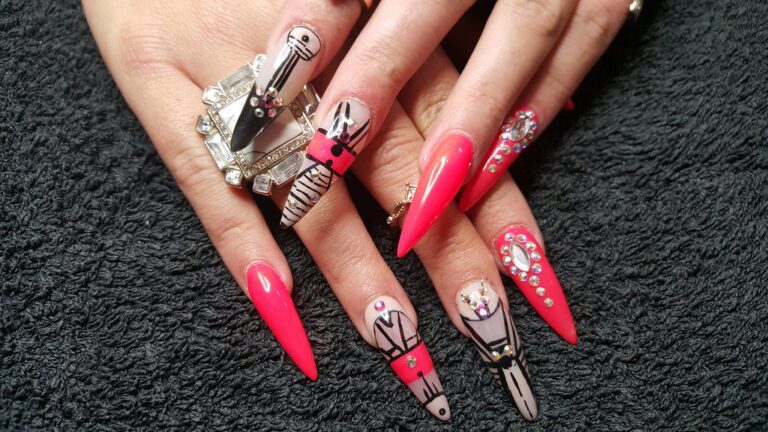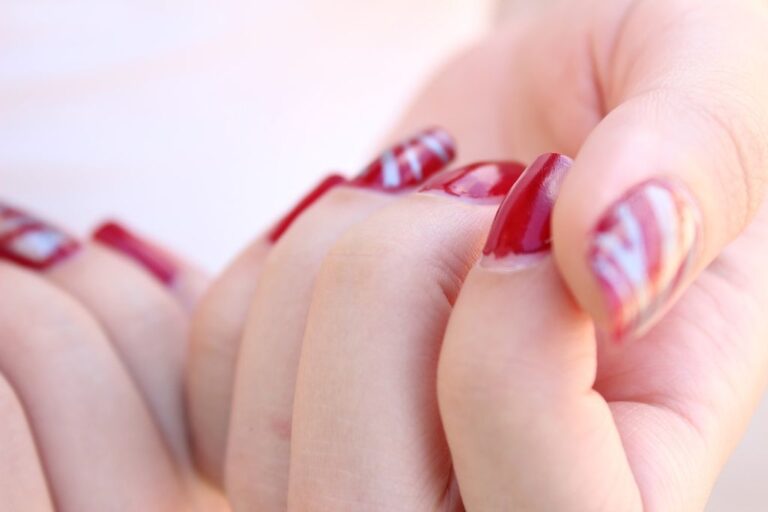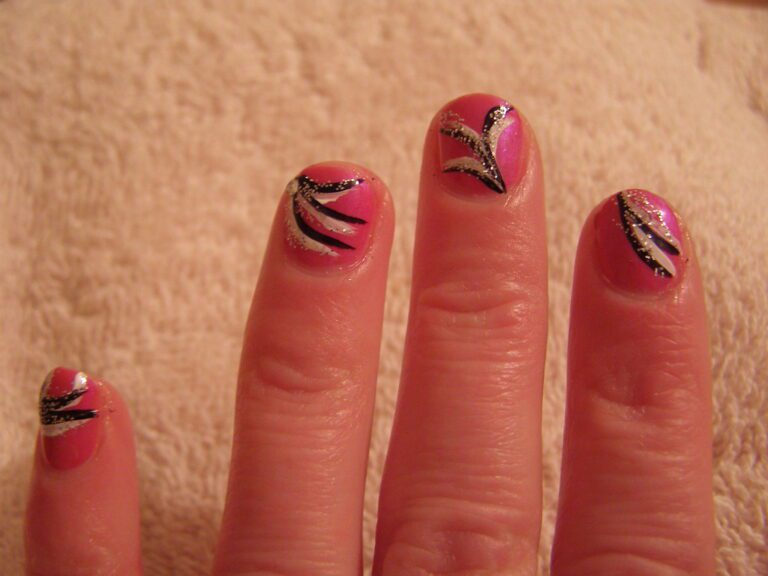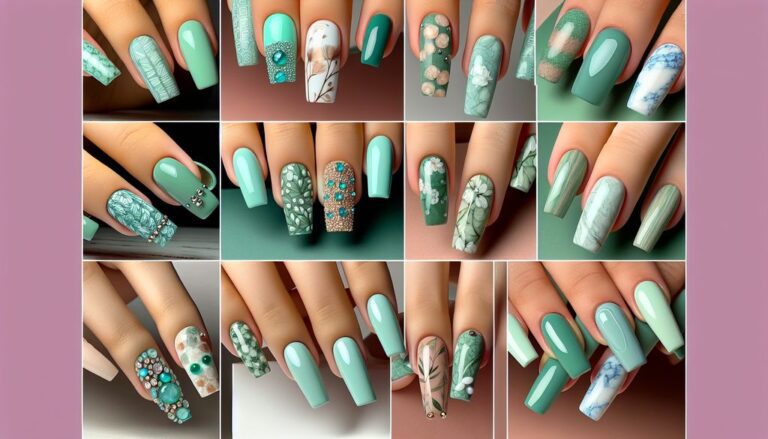“Health Insights: What Nails Say About Health”
In this article, we explore the fascinating relationship between nail health and overall well-being. Our nails can often reveal important insights about our health, serving as indicators of various underlying conditions. By understanding the signs and signals that our nails present, we can gain valuable knowledge about our overall health. Let’s delve into the key takeaways from each section of this insightful exploration.
Key Takeaways
- Pay attention to the color of your nails, as pale nails can indicate anemia, yellow nails may be a sign of the yellow nail syndrome, and blue nails could be related to circulatory issues.
- Nail texture and strength can reveal important information about nutritional deficiencies, psoriasis, and aging. Brittle nails may indicate nutritional deficiencies, while pitting nails could be a sign of psoriasis. Ridges in nails are often associated with aging.
- Slow nail growth may be linked to hormonal imbalances, while rapid nail growth may warrant concern and further investigation.
- Inflammation and infection signs in the cuticles and nail beds should not be overlooked, as they can indicate underlying health issues. Nail bed discoloration may also be a sign of disease.
- Fungal infections are common nail concerns and recognizing the different types of nail fungus is crucial for effective treatment. There are various treatment options available for nail fungus, so it’s important to seek professional advice for the best course of action.
Decoding Nail Color: Indicators of Health Conditions

Pale Nails and Anemia
When nails appear unusually pale, it may be a sign of anemia, a condition characterized by a deficiency of red blood cells or hemoglobin. This can lead to insufficient oxygen reaching the body’s tissues, including the nail beds, resulting in a lighter nail color. Anemia can be caused by various factors, including iron deficiency, chronic diseases, or vitamin B12 shortages.
To determine if pale nails are indeed indicative of anemia, a healthcare provider may conduct a complete blood count (CBC) test. This test measures levels of red blood cells, hemoglobin, and other components to diagnose anemia and its severity.
Tip: If you notice your nails are persistently pale, it’s important to consult with a healthcare professional to rule out anemia or other underlying health issues.
Maintaining a diet rich in iron and vitamins can help prevent anemia. Foods such as red meat, beans, and leafy greens are excellent sources of iron, while dairy products and eggs provide vitamin B12.
Yellow Nails Syndrome
Yellow Nails Syndrome is often characterized by a distinct thickening and yellowing of the nails, which may also become excessively curved and lack a cuticle. While the exact cause is not always clear, it can be associated with respiratory conditions and lymphedema (swelling of body tissues due to fluid buildup). Additionally, fungal infections are a common culprit behind the yellow discoloration.
- Treatment for Yellow Nails Syndrome varies depending on the underlying cause. If a fungal infection is present, antifungal medications may be prescribed. In cases linked to respiratory issues or lymphedema, addressing the primary health condition is crucial. Maintaining proper nail hygiene and avoiding exposure to harsh chemicals can also help improve nail appearance.
Tip: If you notice persistent yellowing of your nails, it’s important to consult a healthcare professional to rule out serious underlying conditions.
Blue Nails and Circulatory Issues
When nails take on a blue hue, it’s often a sign that something is amiss with the body’s circulation. This condition, known as cyanosis, indicates a deficiency in oxygenated blood reaching the extremities, including the fingers. Circulatory issues can stem from a variety of causes, ranging from benign to serious health concerns.
Cold environments can temporarily cause blue nails due to vasoconstriction, where blood vessels narrow and limit blood flow. However, persistent blue coloring may point to more chronic conditions such as heart or lung diseases. It’s essential to monitor the frequency and duration of such changes in nail color.
Tip: If you notice your nails turning blue frequently or persistently, it’s important to consult a healthcare professional to rule out underlying health issues.
Identifying the cause of blue nails can involve a review of symptoms and medical history, followed by appropriate diagnostic tests. Treatment will vary based on the underlying condition but may include lifestyle changes, medication, or more specialized interventions.
Nail Texture and Strength: What They Reveal

Brittle Nails and Nutritional Deficiencies
Brittle nails are often more than just a nuisance; they can be a sign of deeper nutritional issues. A lack of essential nutrients such as biotin, iron, and zinc can lead to nails that are weak and prone to breaking. It’s important to consider not only the diet but also the absorption of these nutrients. For instance, gastrointestinal problems can interfere with how nutrients are processed by the body.
Regular intake of vitamins and minerals is crucial for maintaining nail strength. Here’s a list of nutrients that are particularly important for nail health:
- Biotin (Vitamin B7)
- Iron
- Zinc
- Vitamin C
- Omega-3 fatty acids
Tip: Incorporate a variety of fruits, vegetables, lean proteins, and whole grains into your diet to provide a balanced supply of these nutrients.
If you’re experiencing persistent nail brittleness, it’s advisable to consult with a healthcare professional. They can help determine if the issue is due to a nutritional deficiency or another underlying health condition.
Pitting Nails and Psoriasis
Nail pitting is a classic symptom often associated with psoriasis, a chronic skin condition. The presence of small, round depressions on the nail surface can be an early indicator of psoriatic arthritis (PsA), a related joint condition. These pits may appear as random or isolated dents, and their number and depth can vary.
While the exact cause of nail pitting in psoriasis patients is not fully understood, it is believed to be due to the disruption in the growth of the nail at the nail matrix. This disruption can be a reflection of the systemic inflammation that characterizes psoriasis.
Tip: If you notice pitting in your nails, especially if accompanied by other symptoms of psoriasis, it’s important to consult a healthcare professional for an accurate diagnosis and appropriate treatment plan.
Treatment for nail pitting related to psoriasis may include topical treatments, light therapy, and medication aimed at reducing inflammation. It’s essential to manage the underlying psoriasis to improve nail health and prevent further complications.
Ridges in Nails and Aging
Ridges in nails are a common occurrence as we age. These vertical ridges, also known as onychorrhexis, are often a natural part of the aging process and are generally nothing to worry about. They can be caused by a decrease in the production of natural oils in the nail bed, leading to dehydration and subsequent ridges. While ridges in nails can be unsightly, they are usually harmless and can be managed with proper nail care and hydration. It’s important to note that sudden changes in the appearance of ridges should be monitored and discussed with a healthcare professional to rule out any underlying health concerns.
Nail Growth Patterns and Systemic Health

Slow Nail Growth and Hormonal Imbalances
Slow nail growth can be an indicator of hormonal imbalances. Hormones play a crucial role in regulating the growth and strength of nails. If you notice a significant slowdown in nail growth, it’s essential to consult a healthcare professional to assess your hormonal health. Additionally, monitoring other symptoms associated with hormonal imbalances, such as fatigue, irregular periods, or weight changes, can provide valuable insights into your overall well-being.
In some cases, hormonal imbalances can be linked to specific medical conditions. For instance, hypothyroidism, a condition characterized by an underactive thyroid gland, can lead to slow nail growth. Understanding the underlying cause of hormonal imbalances is vital for developing an effective treatment plan.
Tips for Healthy Nail Growth:
- Maintain a balanced diet rich in essential nutrients, including biotin, vitamin E, and iron.
- Practice stress-reducing activities to support hormonal balance and overall well-being.
- Stay hydrated to promote nail hydration and strength.
Remember, your nails can provide valuable clues about your systemic health, and addressing hormonal imbalances can contribute to improved nail health and overall wellness.
Rapid Nail Growth: When to Be Concerned
Rapid nail growth can be a sign of various underlying health conditions. While it’s normal for nails to grow at different rates for different individuals, a sudden and significant increase in nail growth should be monitored. This could be an indication of hormonal imbalances or other systemic health issues. If you notice a sudden change in the growth rate of your nails, it’s advisable to consult a healthcare professional for further evaluation and guidance. Additionally, maintaining a balanced diet and addressing any underlying health concerns can help regulate nail growth.
Cuticle and Nail Bed Health: A Window to Your Well-being

Inflammation and Infection Signs
Inflammation and infection around the nails can be indicative of various conditions, ranging from minor irritations to more serious infections. It’s important to pay attention to the signs and symptoms of nail inflammation and infection, as they can provide valuable insights into your overall health. Some common signs to watch out for include redness, warmth, swelling, and tenderness around the nail area. These symptoms may indicate the presence of an infection or inflammation that requires attention. If you notice any of these signs, it’s advisable to seek medical advice to address the underlying cause effectively. In some cases, a small collection of pus may form, indicating a more severe infection that needs prompt treatment. Paying attention to these signs can help in early detection and management of nail-related health issues.
Nail Bed Discoloration and Disease
Changes in the color of the nail bed can be an important indicator of underlying health issues. Discoloration may range from dark streaks to white spots or complete color changes. For instance, dark streaks could be a sign of melanoma, while white spots often indicate minor injuries or infections.
Certain conditions can also lead to more generalized changes in nail bed color. For example, a brownish discoloration may suggest a kidney disease, whereas a pale or white nail bed could point to liver diseases such as hepatitis. It’s essential to monitor these changes and consult a healthcare professional if they persist.
Tip: Consistent observation of your nail beds can help in early detection of potential health problems.
Fungal Infections: Common Nail Concerns and Treatments

Identifying Different Types of Nail Fungus
Fungal infections of the nails, while common, can be caused by a variety of fungi, each with distinct characteristics. The most prevalent type is dermatophyte fungus, which primarily affects the toenails. Yeasts and molds can also infect the nails, often occurring in individuals with weakened immune systems or existing conditions like athlete’s foot.
To accurately identify the type of fungal infection, a healthcare provider may collect a nail sample for laboratory analysis. This step is crucial as it influences the treatment plan. For instance, dermatophyte infections might be treated differently than yeast infections.
- Dermatophyte fungus: Typically affects toenails, causing thickening and discoloration.
- Yeast infections: May cause the nail to separate from the nail bed.
- Mold infections: Often result in deeper nail bed infections and discoloration.
Tip: Early identification and treatment of nail fungus are essential to prevent the spread and worsening of the condition.
Effective Treatment Options for Nail Fungus
When it comes to treating nail fungus, a multi-faceted approach is often most effective. Over-the-counter antifungal creams, ointments, or gels can be a good starting point for mild cases. For more persistent infections, oral antifungal medications may be prescribed, which can provide a more systemic treatment. It’s important to follow the treatment regimen as directed by a healthcare professional to ensure the best outcome.
In addition to pharmacological treatments, non-pharmacological methods such as laser therapy have shown promise. This technique involves the use of high-intensity light to target and destroy the fungus without damaging the surrounding nail tissue.
Tip: Consistency is key in treating nail fungus. Skipping applications or not completing the course of treatment can lead to recurrence.
Lifestyle changes can also play a significant role in treatment success. Keeping nails trimmed, dry, and clean helps prevent the spread and growth of fungus. If you frequent nail salons, ensure they follow proper sanitization procedures to avoid cross-contamination.
The Impact of Lifestyle on Nail Health

The Effects of Smoking on Nail Appearance
The impact of smoking on nail health is both visible and significant. Nicotine and tar, prevalent in cigarettes, are primary culprits for the yellowing of nails. This discoloration often starts subtly but can become more pronounced over time. Not only does smoking lead to a change in color, but it also affects the growth and strength of nails.
Smoking is known to introduce a plethora of toxins into the body. These toxins can impede the supply of nutrients to the nail beds, resulting in brittle and weak nails. Moreover, the habit of smoking can exacerbate the appearance of ridges and other abnormalities on the nail surface.
Quitting smoking is a crucial step towards improving nail health. While the process of reversing the damage may take time, cessation of smoking can gradually restore the natural color and strength of nails. Here are some steps to consider for healthier nails:
- Reduce or quit smoking to prevent further discoloration and damage.
- Maintain a balanced diet to provide essential nutrients for nail growth.
- Keep nails clean and moisturized to avoid brittleness.
Tip: Regularly inspecting your nails for changes in color or texture can be an early indicator of the need to reassess lifestyle choices, such as smoking.
How Diet Influences Nail Condition
When it comes to nail health, diet plays a crucial role in maintaining strength and resilience. A diet rich in essential nutrients such as biotin, protein, and omega-3 fatty acids can significantly improve the condition of nails. Incorporating foods like eggs, almonds, peanuts, whole grains, and sweet potatoes can provide the necessary nutrients for promoting healthy nail growth and preventing brittleness. Additionally, staying hydrated by consuming an adequate amount of water is essential for overall nail health. Ensuring a balanced and nutrient-rich diet is key to achieving strong and beautiful nails.
The impact of lifestyle on nail health is a crucial aspect of overall well-being. At NAILinspire.com, we understand the importance of maintaining healthy nails and the role that lifestyle choices play in achieving this. Our ultimate online nail art design library is a treasure trove of inspiration, tips, and techniques to help you achieve the perfect nails. Whether you’re a nail art enthusiast or someone looking to improve the health of your nails, NAILinspire.com has everything you need to elevate your nail game. Visit our website today and embark on a journey to healthier, more beautiful nails.
Frequently Asked Questions
What health conditions can cause pale nails?
Pale nails can be an indicator of anemia, a condition characterized by low levels of red blood cells or hemoglobin.
What is yellow nails syndrome?
Yellow nails syndrome is a rare condition characterized by thickened, yellow nails and respiratory symptoms, often associated with underlying health issues.
What health conditions can cause blue nails?
Blue nails can be a sign of circulatory issues, such as poor blood circulation or low oxygen levels in the blood.
What nutritional deficiencies can lead to brittle nails?
Brittle nails can be a result of nutritional deficiencies, particularly low levels of iron, zinc, and biotin.
What is the significance of ridges in nails?
Ridges in nails can be a natural part of aging, but they can also indicate certain health conditions such as nutrient deficiencies or arthritis.
How does smoking affect nail appearance?
Smoking can lead to yellowing of the nails, slow nail growth, and an increased risk of fungal nail infections.





